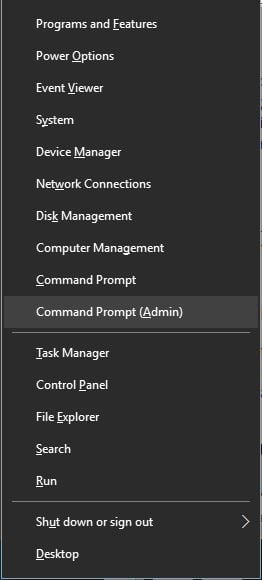
- #How to check for corrupted files on windows 10 drivers
- #How to check for corrupted files on windows 10 update
- #How to check for corrupted files on windows 10 windows 10
Select any version of Safe Mode by pressing the appropriate F key.
#How to check for corrupted files on windows 10 windows 10
Let’s start windows 10 in safe mode and perform an SFC scan again.
#How to check for corrupted files on windows 10 drivers
Note: Safe Mode is a special mode that uses only default drivers and applications. If the issue still persists, run the SFC scan again.Ī number of users reported running system file checker utility in windows safe mode help them restore corrupted files with the correct one. Note: you need to check if the problem is resolved. Once the scanning process completes 100, restart windows to take effect.
#How to check for corrupted files on windows 10 update
During this DISM will go to Windows update online and get any missing or corrupt files.DISM will check your Windows component store for corruption and automatically fix any problems it finds.Type Command DISM /Online /Cleanup-Image /RestoreHealth and hit Enter.Again open the command prompt with administrative privileges,.Also, fixes any corruption problems that can prevent the SFC tool from running. In such cases, you need the Deployment Image and Servicing Management (DISM) tool that helps with repair and prepares Windows images. Details are included in the CBS.Log windirLogsCBSCBS.log. Some times sfc / scannow command does not work as expected the scan results something like “Windows Resource Protection found corrupt files but was unable to fix some of them. After that Restart windows and this will probably fix Windows For corruption. Mostly, it plods through and displays the results, like this: Verification is 100% complete. This process takes some time.īeginning verification phase of system scan. Type command sfc /scannow and hit the enter key on the keyboard,.Right-click on command prompt then select run as administrator,.If you notice an increase in the Blue Screen of Death, applications constantly crashing, Windows operations stalling, you may need to run the System File Checker to help correct errors causing your PC to perform slowly.

From there, it replaces the file with the correct version to ensure smooth functioning. We can say the System File Checker tool scans your computer for any corruption Or changes to system files that would otherwise interfere with the normal operation of your PC. The System File Checker or sfc.exe is a utility in Microsoft Windows located in C: Windows\System32 folder that allows users to scan for and restore corrupt Windows system files. Also, you can use the DISM command-line and perform a System restore that helps get rid of the Corrupted system files problem on Windows 10. Like previous versions, Windows 10 also includes a system file checker (tiny, powerful command-line utility) that scans the integrity and automatically replaces any corrupted or missing protected system file with a known good version.


 0 kommentar(er)
0 kommentar(er)
